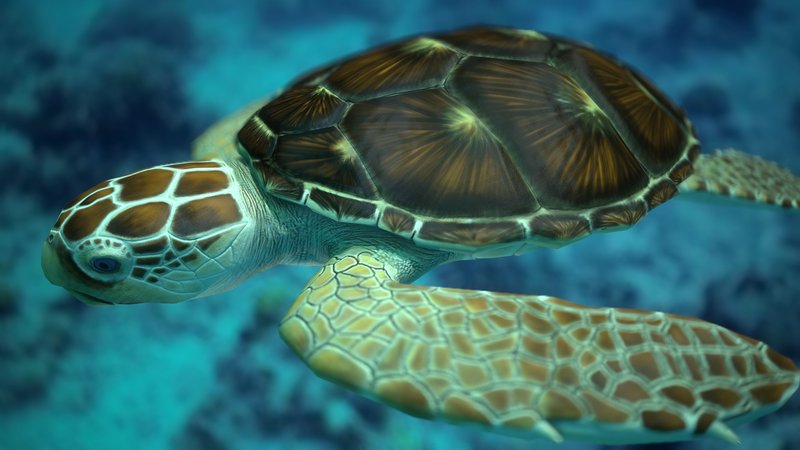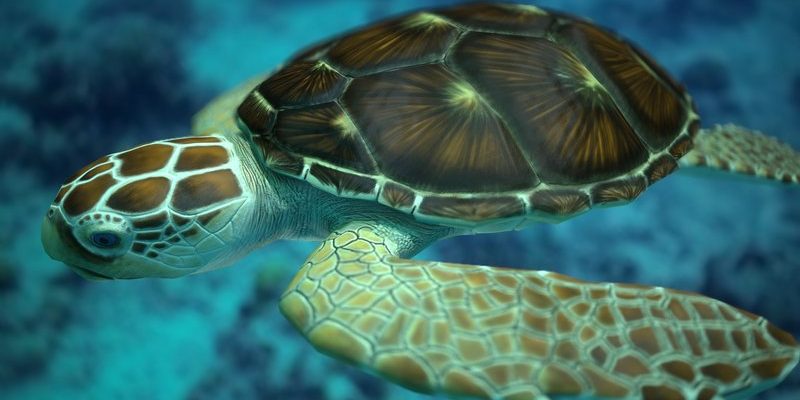
The loggerhead turtle, scientifically known as *Caretta caretta*, has seen the world change dramatically around it. From thriving in warm waters to adapting to various challenges, this turtle’s journey mirrors our own significance in the world’s ecosystems. Here’s the thing—understanding their evolution not only piques our curiosity but also highlights the importance of conserving these magnificent creatures.
Origins of the Loggerhead Turtle
The journey of the loggerhead turtle began over 60 million years ago. That’s right! They’ve been living in our oceans longer than most of us can fathom. These turtles belong to the family Cheloniidae, which is home to several sea turtle species. Researchers believe that loggerheads evolved from a group of ancient turtles, known as “proganochelys,” that lived during the late Triassic period.
What sets loggerheads apart is their impressive size. They can weigh up to 250 pounds and grow to lengths of about 3 feet. Their characteristic large head, which has powerful jaws, helps them eat hard-shelled prey like conchs and sea urchins. You might be wondering why their adaptations matter. Well, these features have allowed loggerheads to thrive in diverse environments, making them one of the most resilient species in the ocean.
The Loggerhead’s Migration Patterns
Loggerhead turtles are true ocean travelers. Known for their remarkable migration patterns, they can travel thousands of miles between feeding and nesting grounds. After hatching, baby loggerheads instinctively swim toward the open ocean, where they spend years in the pelagic zone. This phase is crucial for their growth and development, letting them feed on jellyfish and other small marine organisms.
As adults, loggerheads migrate to warmer coastal waters for breeding. Female loggerheads return to the same beaches where they hatched, a phenomenon known as “natal homing.” Researchers believe that these turtles can “see” the Earth’s magnetic field, which guides them during their epic journeys. Isn’t that fascinating? Each migration helps maintain genetic diversity, which is vital for the species’ survival.
Adapting to Environmental Changes
Over millions of years, loggerheads have faced numerous environmental changes. From shifting ocean temperatures to fluctuating food supplies, their ability to adapt has been essential for survival. Their thick shells protect them from predators, while their strong, paddle-like limbs allow them to navigate through various ocean currents.
Despite their success, loggerheads are not immune to the impacts of climate change. Rising sea levels threaten their nesting sites, while warmer ocean temperatures affect the availability of prey. These changes can disrupt their migration patterns, making it vital for us to advocate for conservation efforts. Let’s face it: without our help, loggerheads could face serious challenges that threaten their existence.
Threats to Loggerhead Survival
While loggerhead turtles are remarkable survivors, they face threats that jeopardize their future. Commercial fishing practices, such as longlining and trawling, often unintentionally catch these turtles. This bycatch can lead to injury or death, impacting populations worldwide.
Additionally, habitat loss due to coastal development affects nesting beaches. Pollution, including plastic waste, poses another significant risk. Loggerheads often mistake plastic for jellyfish, which can lead to ingestion and serious health issues. To address these threats, conservation groups are working on strategies to protect nesting sites and promote sustainable fishing practices.
Conservation Efforts and Future Outlook
Conserving the loggerhead turtle isn’t just about protecting a single species; it’s about preserving our oceans and the balance of marine ecosystems. Organizations worldwide are dedicated to raising awareness and implementing measures to safeguard these turtles. For example, many coastal areas have adopted regulations that protect nesting beaches and restrict harmful activities.
Innovative tracking technologies help researchers monitor migration patterns, allowing us to gain a better understanding of their behaviors. Furthermore, community-based initiatives are crucial for encouraging sustainable practices and education. The future of the loggerhead turtle depends on our commitment to protect their habitats and promote ocean health.
The Role of Loggerheads in Marine Ecosystems
Loggerhead turtles aren’t just fascinating creatures; they play an essential role in maintaining the health of marine ecosystems. By feeding on jellyfish and other species, they help control populations and maintain balance within their habitats. This keeps ocean ecosystems functioning smoothly, much like how every piece of a puzzle fits together.
Moreover, their nesting activities contribute to beach ecosystems. The eggs they lay help nutrient cycling on beaches, supporting various plant and animal life. You might not have thought about it, but loggerheads influence more than just their surroundings—they impact entire ecosystems. Understanding this connection reinforces the importance of preserving their populations.
The evolutionary journey of the loggerhead turtle is nothing short of extraordinary. From their ancient origins to the challenges they face today, these turtles have adapted in incredible ways. Yet, their future hangs in the balance due to human impact on the environment.
Remember, this isn’t just about saving a species; it’s about maintaining the delicate balance of life in our oceans. By supporting conservation efforts and protecting marine habitats, we can ensure that loggerhead turtles continue to thrive for generations to come. So, let’s stay aware, advocate for change, and cherish the beauty of these magnificent creatures as they navigate their ever-evolving journey through our world.

